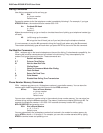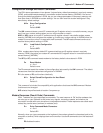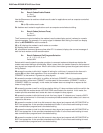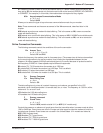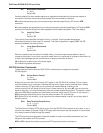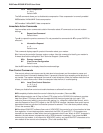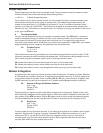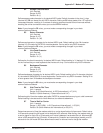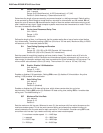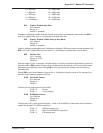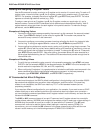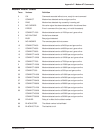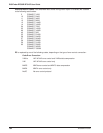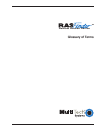
RASFinder RF300E/RF310E User Guide
RF300E/RF310E
176
Escape Sequences
Escape sequences are also known as escape codes. They are used to cause the modem to enter
command mode from online mode without disconnecting the call.
+++AT<cr> In-Band Escape Sequence
If the modem is online with a remote modem, you can cause the modem to enter command mode
without disconnecting the call by typing an escape code. The default escape code used by the
modem is three plus signs (+++) followed by the letters AT, up to 10 command characters (most
typically H, to hang up), and ENTER. The modem then escapes to command mode, executes the
command (if any), and remains in command mode. For example, to hang up the modem at the end of
a call, type +++ATH <cr>.
A Force Answer Mode
You can use the A command to force the modem into answer mode. Type ATA when in command
mode to immediately bring your modem off-hook, out of command mode, into online answer mode,
and to cause it to transmit its carrier signal over the phone line. If no responding carrier tone is
received by your modem within 45 seconds (or by the time you specified in register S7), your modem
stops transmitting its tone, hangs up, and goes back into command mode.
On Go Back Online
n = 0, 1, or 3
Default: none
Use the O command to bring the modem out of command mode and back into online mode. The O
command reverses the result of entering the escape code. The O command brings modem into the
online mode (originate or answer) it was in prior to entering command mode.
O0 causes the modem to exit command mode and return to online data mode.
O1 causes the modem to issue a retrain before returning to online data mode.
O3 causes the modem to issue a rate renegotiation before returning to online data mode.
Modem S-Registers
S-registers are small regions of memory where modem configuration information is stored. Whereas
AT commands tell a modem what to do, S-registers tell the modem how to do it. Each S-register has
a name that consists of the letter S and a number (S0, S1, S2, etc.), hence the term S-register. Use
the Sr? command to read the value stored in an S-register and the Sr=n command to change it.
S0 Number of Rings Until Modem Answers
Unit: 1 ring
Range: 0–255
Default: 0
Defines number of rings the modem waits before answering an incoming call. Default value is zero,
which effectively disables the auto-answer function. When auto-answer is disabled, the modem can
only answer via the ATA command. Set the S0 register value to one to cause the modem to answer
the call immediately after the first ring. Maximum number of rings that can be configured is 255.
S1 Ring Count
Unit: 1 ring
Range: 0–255
Default: 0
Counts number of rings that have occurred. It is a read type of register and is seldom used in typical
operation. Each time an incoming ring signal is detected, S1 increases its value by one, up to a
maximum of 255. If you set S1 to a value other than its default value of zero, or if the value is
increasing with rings, this new value remains stored in S1 for eight seconds after the last ring is
counted, after which the value reverts back to zero.



